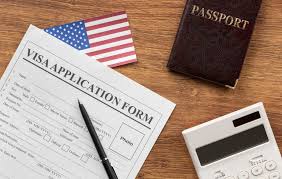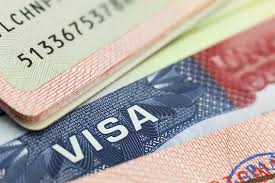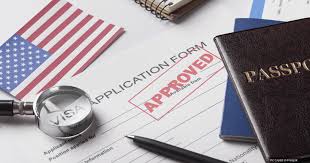Immigrant Visa to the US: Requirements and Process

An immigrant visa to the United States is required for foreign nationals who wish to permanently reside in the U.S. Immigrant visas are issued to individuals who are moving to the U.S. for family reunification, employment, refugee status, or other qualifying reasons. This type of visa is different from non-immigrant visas, which are for temporary stays.
For many, obtaining an immigrant visa is a crucial step toward achieving their goal of living in the United States permanently. However, the process of obtaining an immigrant visa can be complicated and requires careful adherence to the rules set forth by the U.S. Department of State and U.S. Citizenship and Immigration Services (USCIS).
In this article, we’ll break down the requirements, types of immigrant visas, and the step-by-step process of applying for an immigrant visa to the U.S.
1. Types of Immigrant Visas
The U.S. government offers several different categories of immigrant visas, each designed for a specific purpose. The two main categories are family-based and employment-based immigrant visas.
1.1 Family-Based Immigrant Visa
Family-based immigration is one of the most common ways individuals gain permanent residence in the U.S. The family-based immigrant visa allows U.S. citizens and lawful permanent residents (green card holders) to sponsor their relatives to immigrate to the U.S.
Some of the primary family-based immigrant visa categories include:
- Immediate Relatives: U.S. citizens can sponsor their spouses, children (under the age of 21), and parents (if the U.S. citizen is over the age of 21).
- Family Preference System: This includes other family members, such as adult children, siblings, and their families, who are sponsored by U.S. citizens.
1.2 Employment-Based Immigrant Visa
An employment-based immigrant visa is for individuals who wish to immigrate to the U.S. based on a job offer. The employer acts as the sponsor, but the applicant must meet specific qualifications for the job. There are five employment-based immigrant visa categories, including:
- EB-1: Priority workers, including those with extraordinary abilities in certain fields (science, arts, education, business, etc.).
- EB-2: Professionals holding advanced degrees or individuals with exceptional abilities in their field.
- EB-3: Skilled workers, professionals, and other workers with specific job qualifications.
- EB-4: Special immigrants, including religious workers, certain foreign diplomats, and other specific groups.
- EB-5: Investors who are willing to invest a significant amount of capital in U.S. businesses that create jobs.
1.3 Diversity Visa (DV) Lottery
The Diversity Visa Lottery program offers a limited number of immigrant visas each year to individuals from countries with low rates of immigration to the U.S. The program is designed to diversify the U.S. immigrant population. Individuals selected in the lottery are then eligible to apply for an immigrant visa.
1.4 Refugee and Asylum Immigrant Visa
If you are fleeing persecution in your home country, you may be eligible for a refugee or asylum status, which can eventually lead to an immigrant visa. Refugees are individuals who are outside their home country due to fear of persecution, while asylum seekers are already in the U.S. and have applied for protection.
2. Eligibility Requirements for an Immigrant Visa
To qualify for an immigrant visa, applicants must meet specific eligibility requirements. These include:
2.1 Relationship or Employment Status
For family-based immigrant visas, you must be the close relative of a U.S. citizen or lawful permanent resident, as outlined in the family-based categories above. For employment-based visas, you must have an offer of permanent employment from a U.S. employer who can demonstrate the need for your skills.
2.2 Approved Petition
In most cases, an Immigrant Petition must be approved before you can proceed with the visa application process. For family-based visas, this involves filing Form I-130, Petition for Alien Relative. For employment-based visas, the employer files Form I-140, Immigrant Petition for Alien Worker.
2.3 Medical Examination
Immigrant visa applicants are required to undergo a medical examination by an approved physician. This is to ensure that the applicant is not carrying any communicable diseases or other health conditions that may pose a risk to public health.
2.4 Proof of Financial Support
To qualify for an immigrant visa, you must demonstrate that you have sufficient financial support to live in the U.S. without relying on government assistance. U.S. citizens or residents who are sponsoring family members may need to submit an Affidavit of Support (Form I-864), which confirms that the sponsor can financially support the applicant.
2.5 Security and Background Checks
As part of the application process, applicants must undergo extensive security and background checks to ensure that they are not inadmissible due to criminal activity, immigration violations, or other factors that would make them ineligible for a visa.
3. The Immigrant Visa Application Process
The process for applying for an immigrant visa can vary depending on the type of visa being applied for. Below is an overview of the general steps involved in applying for an immigrant visa.
3.1 Step 1: Petition Approval
The first step is for the U.S. sponsor (family member or employer) to file an immigrant petition with USCIS. This could be Form I-130 (for family-based visas) or Form I-140 (for employment-based visas). Once the petition is approved, USCIS will forward the petition to the National Visa Center (NVC).
3.2 Step 2: Immigrant Visa Application
Once your petition is approved and your priority date becomes current, the next step is to submit a Visa Application Form DS-260. This form collects your personal information, including your biographical details, travel history, and health background. It’s completed online through the U.S. Department of State’s Consular Electronic Application Center (CEAC).
3.3 Step 3: Submit Required Documents
Along with your DS-260 form, you will need to submit several documents to the NVC, including:
- A valid passport
- Birth certificates
- Police clearance certificates
- Proof of financial support (e.g., Form I-864, Affidavit of Support)
- Medical examination results
- Two passport-sized photos
Make sure all documents are in English or translated into English.
3.4 Step 4: Visa Interview
Once your documents are processed, you will be scheduled for an immigrant visa interview at your local U.S. embassy or consulate. The interview is a critical part of the process where a consular officer will evaluate your eligibility for an immigrant visa. You should be prepared to answer questions about your background, health, family, and any other topics relevant to your application.
3.5 Step 5: Visa Approval and Issuance
If the consular officer approves your application, they will place an immigrant visa sticker in your passport. This visa will allow you to enter the U.S. as a lawful permanent resident.
Upon arrival in the U.S., you will be processed by Customs and Border Protection (CBP). If everything is in order, you will be granted entry, and you will receive your Green Card (Permanent Resident Card) by mail within a few weeks.
4. Common Challenges in the Immigrant Visa Process
While the immigrant visa process is straightforward for some applicants, there are common challenges that many individuals face:
- Long wait times: Some immigrant visa categories have long wait times, especially for family preference and employment-based petitions.
- Visa backlog: Certain countries, such as India and China, face a backlog of visa applicants, meaning applicants may have to wait several years before they can apply.
- Ineligibility due to criminal history or immigration violations: Individuals with a criminal record or past immigration violations may face difficulties in obtaining a visa.
- Document discrepancies: Incomplete or inaccurate documents can lead to delays or visa denials.
5. Conclusion: Navigating the Immigrant Visa Process
The U.S. immigrant visa process can be complex and time-consuming, but with careful preparation and understanding of the steps involved, it is possible to achieve your goal of becoming a lawful permanent resident of the United States. By following the outlined process and ensuring that you meet all the requirements, you can improve your chances of a successful application.
Whether you’re immigrating for family reunification, work, or refuge, securing an immigrant visa will be a life-changing step toward your future in the U.S. With patience and attention to detail, your dream of living and working in the United States can become a reality.




